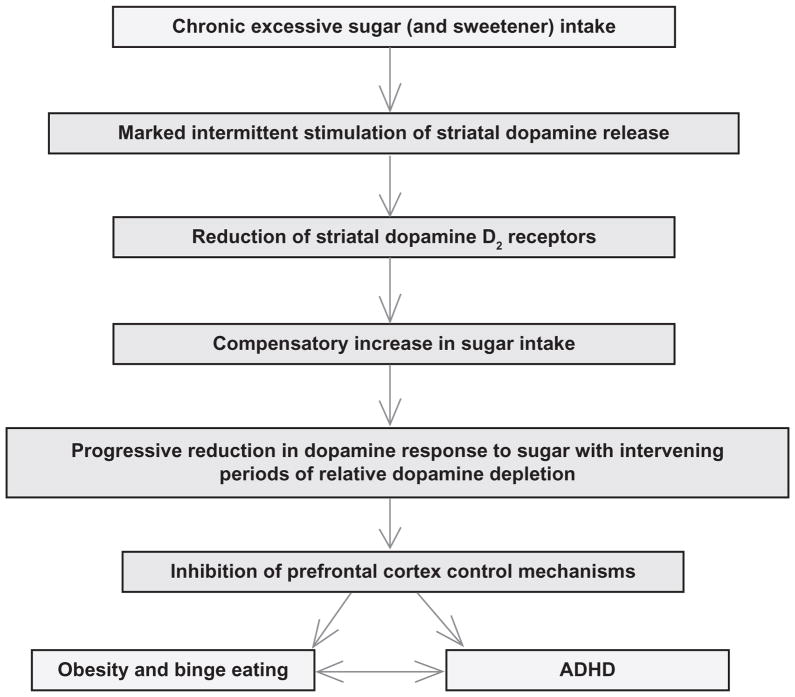Figure 2.
Proposed pathway for the development of symptoms associated with ADHD. The ingestion of sugar or other sweeteners results in an acute elevated dopamine release in the striatum associated with reward. This may lead to increasing sugar ingestion, which, over weeks to months, results in a reduction in striatal D2 receptors. To compensate, increased sugar intake occurs, resulting in dopamine responses that slowly decrease over time. In the periods between sugar ingestion, extracellular dopamine levels may progressively decrease, leading to a low dopamine state. The low dopamine state results in inhibition of frontal cortex control mechanisms, leading to ADHD symptomatology and obesity-prone binge-eating behavior.
Abbreviation: ADHD, atention-deficit/hyperactivity disorder.

